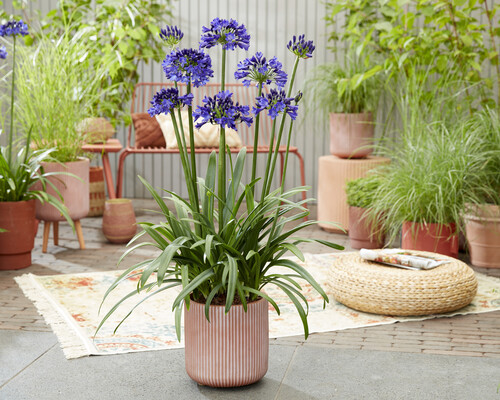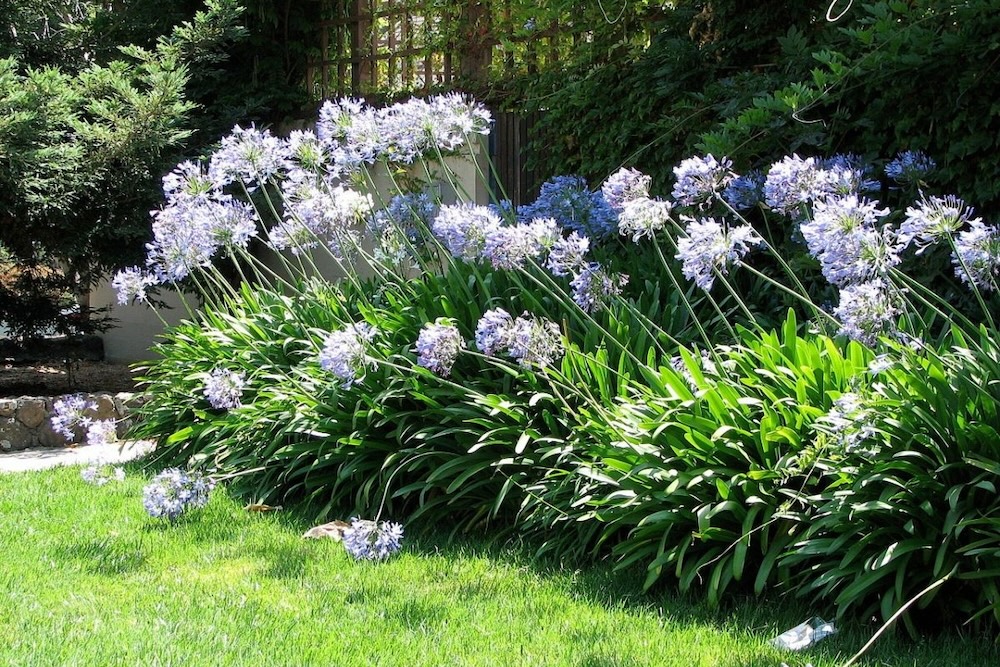Agapanthus Expanding Problems: Dirt, Sunlight, and Watering
Agapanthus Expanding Problems: Dirt, Sunlight, and Watering
Blog Article
Releasing the Secret to Successful Agapanthus Farming: Tips and Techniques for a Flourishing Yard
In the realm of gardening, cultivating agapanthus successfully requires a strategic strategy that incorporates different elements of plant treatment. With cautious interest to detail, one can unlock the secrets to nurturing these stunning blossoms, bring about a yard that prospers with beauty and vibrancy. By understanding the nuances of agapanthus growing, one can create an atmosphere where these plants thrive and bloom perfectly. In the complying with discussion, we will certainly check out vital ideas and techniques that will guide you in the direction of a growing agapanthus garden, providing understandings into best techniques, soil problems, watering strategies, and much more.
Planting Agapanthus: Ideal Practices
When growing Agapanthus, correct dirt preparation is important for ensuring effective growth and advancement of these attractive flowers. Agapanthus, frequently referred to as Lily of the Nile or African lily, grows in well-draining soil with a somewhat acidic to neutral pH level - Agapanthus. Prior to planting, it is vital to modify heavy clay dirts with raw material such as garden compost or peat moss to improve water drainage and give important nutrients for the plants
To plant Agapanthus, select a place that obtains full sunlight to partial shade, as this will promote healthy growth and bountiful blooming. Dig a hole two times the size of the plant's root sphere and position the Agapanthus at the same depth it was formerly expanding. Gently backfill the hole with dirt, pushing down firmly to eliminate any kind of air pockets around the origins.
Water the newly planted Agapanthus extensively and proceed to keep the dirt uniformly damp, especially during the plant's energetic expanding season. Agapanthus. Applying a well balanced plant food once a month can additionally support the plant's growth and blooming. By adhering to these best techniques for planting Agapanthus, you can produce a stunning screen of these exciting blossoms in your yard
Ideal Dirt Issues for Agapanthus
For ideal development and flowering success of Agapanthus plants, making certain the soil problems are optimal is critical. Agapanthus prefers soil that is abundant in nutrients, so integrating a well balanced plant food throughout the growing period can promote healthy and balanced growth and vivid flowers.

Watering and Feeding Tips
To make sure healthy growth and lively blooms, proper watering and feeding methods are crucial for successful Agapanthus farming. Agapanthus here plants profit from regular watering, specifically throughout the growing season.
When it concerns fertilizing Agapanthus, a balanced fertilizer right here with equivalent components nitrogen, phosphorus, and potassium can be applied in the spring to promote healthy development and flowering. Slow-release plant foods are ideal for offering nutrients gradually over a prolonged period. Avoid over-fertilizing, as this can bring about excessive vegetation development at the cost of flowers.
In addition, including raw material like garden compost into the soil can enhance nutrient degrees and improve dirt framework, aiding in the overall health of the Agapanthus plants. By complying with these watering and fertilizing suggestions, garden enthusiasts can guarantee their Agapanthus plants grow and produce spectacular displays of flowers.
Trimming and Deadheading Strategies
Correct trimming and deadheading strategies play a critical duty in maintaining the health and wellness and visual appeals of Agapanthus plants, matching the important methods of watering and fertilizing for successful farming. Pruning Agapanthus involves eliminating spent flower heads, dead or yellowing leaves, and general shaping of the plant to promote much better development. Deadheading, the procedure of removing faded blossoms, not just enhances the plant's appearance yet additionally urges additional flowering.
When deadheading Agapanthus, it is advisable to clip off the blossom stem at the base making use of sharp, tidy shears. This procedure redirects the plant's power from seed manufacturing back into origin and vegetation growth, promoting a much healthier and a lot more robust plant. Regular deadheading can prolong the blooming period of Agapanthus and protect against self-seeding, which can cause overcrowding.
In terms of trimming, Agapanthus normally gain from a light trim after flowering to clean the plant and motivate fresh development. Cutting down the invested flower stems and getting rid of any kind of broken or dead foliage aids preserve the plant's vigor and overall look. Nonetheless, it is important to stay clear of cutting right into the crown of the plant, as this can damage its wellness.

Protecting Agapanthus From Vermins and Diseases
Executing effective bug and disease administration techniques is essential to protecting the health and wellness and vigor of Agapanthus plants in cultivation. One common parasite that influences Agapanthus is the Agapanthus borer, a caterpillar that passages into the plant, causing damages to the leaves and blossoms.
In addition to bugs, Agapanthus are prone to conditions such as origin rot and fungal leaf places. By staying cautious and resolving insect and condition concerns promptly, garden enthusiasts can assist their Agapanthus flourish and prosper.

Final Thought
Finally, successful farming of agapanthus requires proper planting techniques, suitable dirt problems, sufficient watering and feeding, routine pruning and deadheading, and protection from parasites and illness. By complying with these suggestions and tricks, gardeners can ensure a growing yard loaded with stunning agapanthus blooms. Agapanthus. Remember to preserve constant care and interest to detail to promote the health and longevity of these stunning plants
When growing Agapanthus, correct soil prep work is crucial for guaranteeing click this link successful growth and growth of these beautiful blossoms.Water the freshly grown Agapanthus extensively and proceed to maintain the soil equally wet, especially throughout the plant's active expanding season.For optimum development and growing success of Agapanthus plants, making sure the soil conditions are excellent is vital. When planting or hair transplanting Agapanthus, guarantee the dirt is well-prepared to offer the required structure for the plants to develop themselves efficiently. One usual pest that affects Agapanthus is the Agapanthus borer, a caterpillar that tunnels into the plant, creating damages to the flowers and fallen leaves.
Report this page